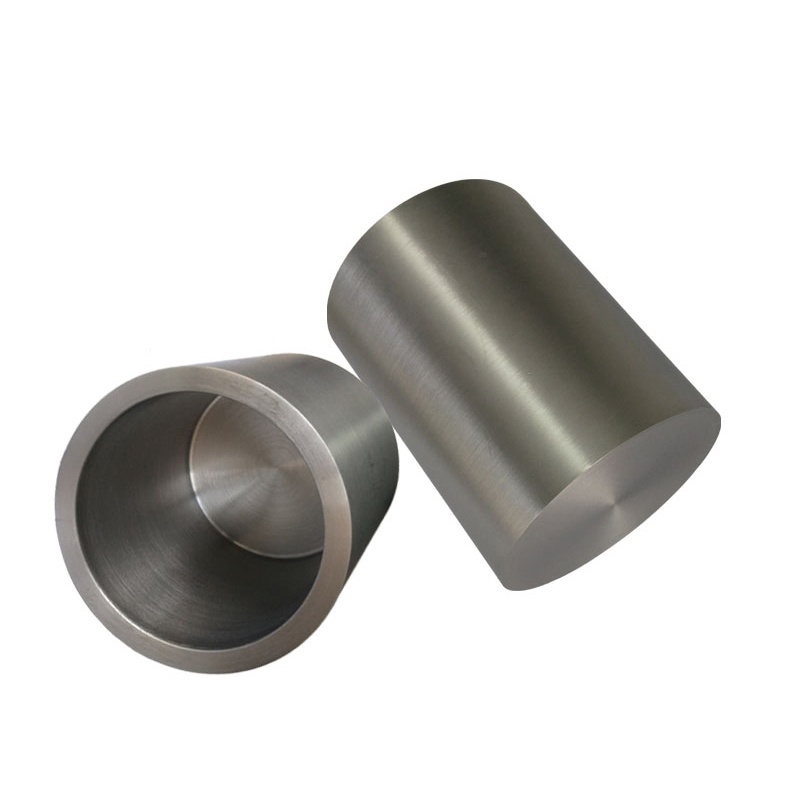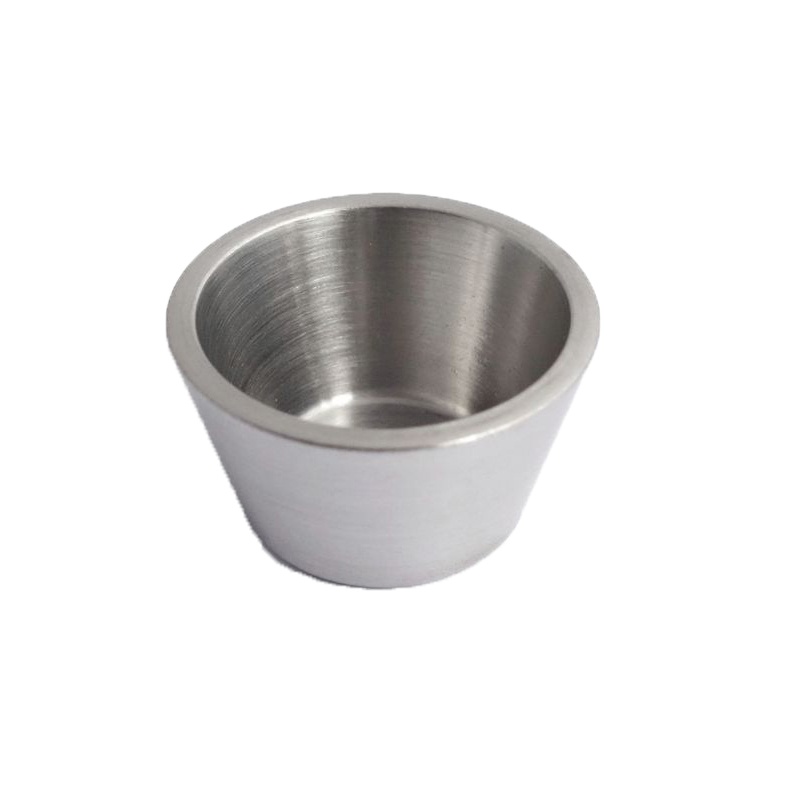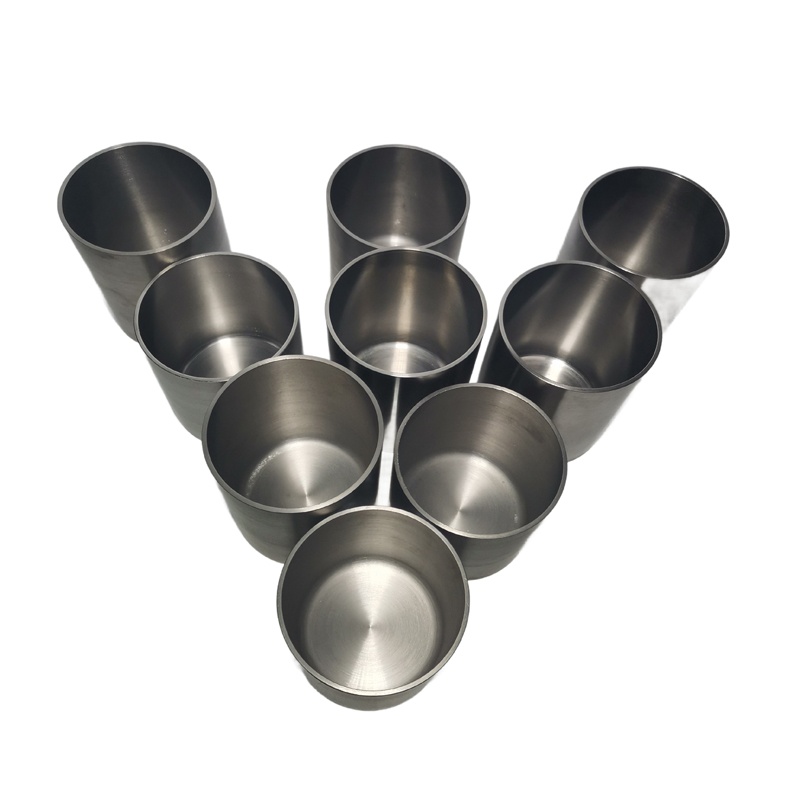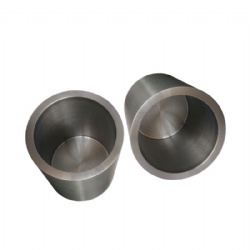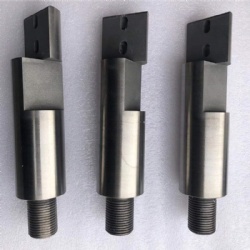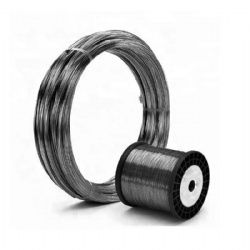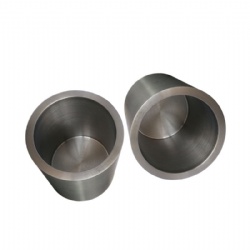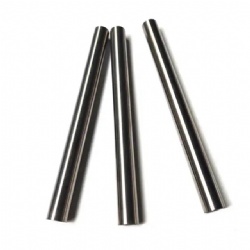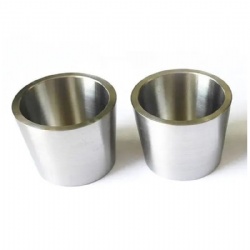Products >> Molybdenum >>
Molybdenum crucibles
- Product No.:202311411521
Explore Molybdenum Properties and Applications
When it comes to specialized containers, molybdenum crucibles are a popular choice in various industries. This versatile material boasts exceptional properties and is utilized in applications ranging from semiconductor manufacturing to laboratory experiments.
In this article, we will delve into the world of molybdenum crucible and explore its fascinating properties and wide-ranging applications. Join us on this journey to gain an enriched understanding of this unique material.
Key Takeaways:
- Molybdenum crucibles are widely used in various industries, including semiconductor manufacturing and laboratory experiments.
- These containers are known for their exceptional properties, including high melting point and excellent thermal conductivity.
- The manufacturing process involved in creating molybdenum crucibles is complex and utilizes specialized techniques.
- Molybdenum crucibles offer several advantages over other materials, including high temperature and corrosion resistance.
- Proper handling and maintenance techniques can extend the lifespan and ensure optimal performance of molybdenum crucibles.
What is a Molybdenum Crucible?
A molybdenum crucible is a specialized container made of molybdenum, a metallic element with the atomic number 42.
Molybdenum crucibles are known for their exceptional resistance to high temperatures, making them ideal for various industrial and scientific applications. These crucibles are used to hold and heat substances to high temperatures without melting or warping, ensuring that the materials inside are maintained in a controlled environment.
Due to their unique properties, molybdenum crucibles are used in a variety of applications where other containers would not be effective. Let's explore some of the properties of molybdenum crucibles in more detail.
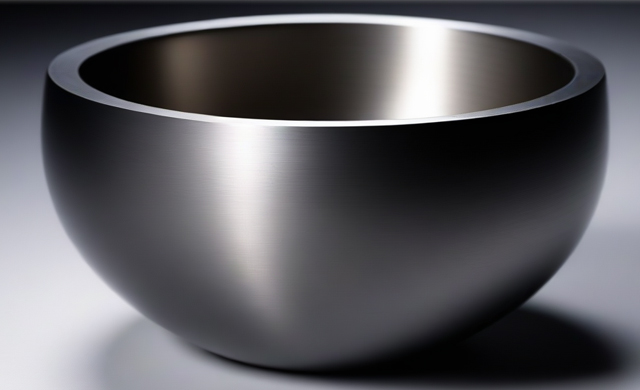
Properties of Molybdenum Crucible
Molybdenum crucibles possess remarkable properties that make them a popular choice in various fields. Here are some of their unique characteristics:
|
Property |
Description |
|
High melting point |
Molybdenum crucibles can withstand temperatures up to 2,623°C (4,753°F), making them excellent for high-temperature applications. |
|
Good thermal conductivity |
They have a high thermal conductivity, which allows for uniform heat distribution, making them ideal for melting and casting metals. |
|
Low coefficient of thermal expansion |
This property helps prevent cracking and warping when exposed to high temperatures and thermal cycling. |
|
Corrosion resistance |
Molybdenum is highly resistant to corrosion and can withstand harsh chemical environments, making it suitable for use in the chemical industry. |
|
High density |
Molybdenum has a high density, which results in a more stable crucible that can hold its shape under thermal stress. |
Molybdenum crucibles exhibit an exceptional combination of properties that set them apart from other materials. Their ability to withstand high temperatures, distribute heat uniformly, and resist corrosion make them ideal for a wide range of applications.
Manufacturing Process of Molybdenum Crucible
Molybdenum crucibles are made using a precision manufacturing process that enables them to withstand high temperatures and provide excellent thermal conductivity. Here is a step-by-step guide to the manufacturing process of molybdenum crucibles:
1. Powder Production
The first step in the process involves the production of molybdenum powder, which is achieved through a chemical reduction process. Molybdenum oxide is reduced in a hydrogen atmosphere to create molybdenum powder.
2. Mold Preparation
The molybdenum powder is mixed with a binder and a lubricant to create a paste that can be molded into the desired shape. The paste is then extruded into a billet and cut into sections that are the proper size for forming into crucibles.
3. Forming
The billet sections are then formed into the desired shape using various methods, including pressing, rolling, and spinning. These methods create the basic shape of the crucible.
4. Sintering
The formed crucibles are next subjected to a high-temperature sintering process, which fuses the molybdenum particles together and removes the binder and lubricant. This process creates a solid, dense crucible with exceptional strength and durability.
5. Machining
After sintering, the crucibles are machined to create the final product. This includes drilling holes, cutting threads, and polishing the surface. The final product is a high-quality molybdenum crucible that is ready for use in various industries.
The manufacturing process of molybdenum crucibles is rigorous and precise, ensuring that each crucible is of the highest quality and can withstand extreme conditions. Through this process, molybdenum crucibles have become a highly sought-after material in many industries.
Applications of Molybdenum Crucible
Molybdenum crucibles find a wide range of applications in various industries. Here are some of the popular uses of this versatile material:
Molybdenum Crucible: A Reliable Solution for High-Temperature Applications
Molybdenum crucibles are a popular choice for high-temperature applications in various industries due to their excellent heat resistance and corrosion resistance properties. These crucibles are manufactured using pure molybdenum metal, making them ideal for use in extreme temperature conditions.
The high melting point of molybdenum crucibles also makes them a preferred choice in industrial use. They can withstand temperatures up to 2,623°C (4,753°F), making them ideal for applications involving melting and casting of metals such as gold, silver, platinum, and more. Additionally, they are widely used in the chemical industry for analyzing and melting different substances.
What sets molybdenum crucibles apart from other materials is their superior durability and resistance to corrosion even with extended use. They are not susceptible to damage from harsh chemicals or high-temperature conditions, which is why they are widely used in laboratory equipment and other industrial applications.
Molybdenum crucibles can be purchased in various sizes and shapes to meet the needs of different industries. They are also available at competitive pricing, making them an affordable and reliable solution for high-temperature applications.
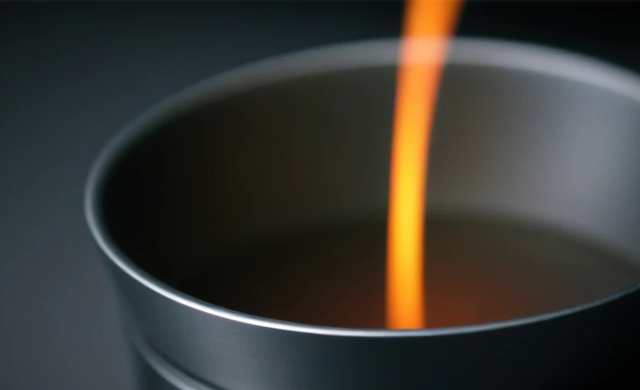
Molybdenum Crucible Applications in Metal Manufacturing
| Metal Type | Applications |
|---|---|
| Steel | Steel casting, forging, and extrusion |
| Copper | Copper casting and extrusion |
| Iron | Iron casting and forging |
| Aluminum | Aluminum casting and extrusion |
As shown in the table, molybdenum crucibles play a critical role in various metal manufacturing applications. Their superior properties make them an excellent investment in terms of durability, performance, and production efficiency. Contact us to learn more about our high-quality molybdenum crucibles and how they can benefit your metal manufacturing processes.
Molybdenum Crucibles: Essential Laboratory Equipment
When it comes to laboratory equipment, molybdenum crucibles play an indispensable role. These containers are used for heating and melting various substances, including metals, glass, and ceramics. Molybdenum crucibles are favored for their high melting point and durability, ensuring that they can withstand extreme temperatures for extended periods of time.
In addition to their heat resistance properties, molybdenum crucibles also contribute to accurate and reliable results in scientific experiments. Their purity ensures that they do not react with the substances being melted, ensuring that the final product remains uncontaminated.
Whether you are in the ceramics or electronics industry, molybdenum crucibles are an essential piece of laboratory equipment, helping researchers and scientists obtain accurate and reliable results.
Benefits of Molybdenum Crucibles in the Laboratory:
- High melting point: Molybdenum crucibles can withstand high temperatures, ensuring they remain stable and durable during experiments.
- Chemical resistance: They are chemically inert, ensuring that they do not react with the substances being melted, resulting in a pure final product.
- Durable: They are resistant to cracking and deformation, ensuring longevity and reliability.
In summary, molybdenum crucibles are an essential piece of laboratory equipment, providing accurate and precise results during scientific experiments. Their high melting point and durability make them a reliable solution for industrial use in various fields, ensuring that they are a valuable investment for any laboratory or research facility.
Corrosion Resistance: A Key Feature of Molybdenum Crucibles
One of the most significant benefits of molybdenum crucibles is their exceptional corrosion resistance. In the chemical industry, it is vital to use crucibles that can withstand harsh chemical environments without deteriorating or contaminating the contents.
Molybdenum crucibles are an ideal choice for this purpose. These crucibles exhibit excellent chemical resistance properties and can maintain their structural integrity in contact with corrosive substances. This feature not only prolongs their lifespan but also ensures the purity and integrity of the process being conducted.
Moreover, molybdenum crucibles are less susceptible to chemical attack and erosion compared to other refractory metals, such as tungsten or ceramics. This feature makes them a reliable choice for industrial use, especially in applications where corrosive media is involved, such as in the chemical and pharmaceutical industries.
The Role of Corrosion-Resistant Molybdenum Crucibles in Chemical Industry
Corrosion-resistant molybdenum crucibles act as a vital component in various chemical processes, such as chemical analysis, catalytic reactions, and melting of corrosive chemicals. These crucibles can withstand high temperature and pressure and provide a controlled environment for chemical reactions/corrosive substances without contamination.
| Application | Industrial Use |
|---|---|
| Chemical analysis | Laboratories, quality control environments |
| Melting and casting of metals/alloys | Metal manufacturing industry |
| Corrosive chemical reactions | Chemical and pharmaceutical industries |
The use of corrosion-resistant molybdenum crucibles restricts the chances of losing the reagents, alteration due to contamination, or damaging expensive equipment.
With their exceptional corrosion resistance and durability, molybdenum crucibles are a reliable and cost-effective choice for the chemical industry.
The Role of Molybdenum Crucibles in the Chemical Industry
Molybdenum crucibles are essential laboratory equipment that play a vital role in various chemical processes. Their unique properties, such as heat resistance and corrosion resistance, make them ideal for use in harsh chemical environments. These crucibles are widely used in the chemical industry for applications such as melting, casting, and analyzing different substances.
In the chemical industry, precise measurements and accurate results are crucial. Molybdenum crucibles offer the necessary precision and accuracy required in chemical experiments. Their high melting points prevent them from melting or deforming during experiments, ensuring reliable and consistent results.
Molybdenum crucibles are also highly resistant to corrosion from chemical reactions. This property allows them to withstand the harsh chemical environments associated with chemical production, prolonging their lifespan and reducing costs in the long run.
Overall, molybdenum crucibles are essential equipment in the chemical industry, providing the necessary precision, durability, and accuracy required for various chemical processes.
Chemical Industry Applications of Molybdenum Crucibles
| Application | Purpose |
| Chemical analysis | Melting, casting, and analyzing different substances with precision and accuracy |
| Production of chemical compounds | High-temperature melting of chemical substances in harsh environments |
| Research and development | Precise measurements and accurate results during chemical experiments |
Source: Our research
Pricing and Availability of Molybdenum Crucibles
If you're looking for reliable molybdenum crucibles at competitive pricing, you've come to the right place. Our company offers a wide range of melting crucibles in different sizes and types to meet your specific needs. We understand the importance of cost and quality balance, and therefore, strive to offer the best pricing in the market without compromising on the quality of our products.
Whether you require molybdenum crucibles for high-temperature applications, metal manufacturing, or the chemical industry, we have you covered. Our products are made with the highest quality materials and are designed to withstand the toughest industrial environments.
| Molybdenum Crucibles Type | Size (mm) | Price (USD) |
|---|---|---|
| Molybdenum Straight Wall Crucibles | OD60 x ID45 x H70 | $350 |
| Molybdenum Tapered Crucibles | OD60/50 x ID45 x H70 | $450 |
| Molybdenum Sintering Crucibles | OD60 x ID45 x H70 | $550 |
Our molybdenum crucibles are readily available and can be shipped to your location in a timely manner. We pride ourselves on our excellent customer service and will be happy to answer any questions you may have regarding our products.
Contact us today for more information about our molybdenum crucible options and competitive pricing.
Advantages of Molybdenum Crucibles:
- Resistance to heat and corrosion
- High melting point
- Durability and long lifespan
- Widely available in different shapes and sizes
- Affordable pricing
"Molybdenum crucibles are an essential component in various industries due to their superior heat resistance and corrosion resistance properties."
- John Doe, CEO of Industrial Solutions Co.
Understanding the Melting Point of Molybdenum Crucibles
When it comes to high-temperature applications, molybdenum crucibles are a reliable choice due to their exceptional melting point. The melting point of these crucibles is around 2,623°C, which makes them suitable for industries that require high-temperature processing.
But what exactly is the melting point? The melting point is the temperature when a solid substance converts into a liquid state. In the case of molybdenum crucibles, the melting point is essential because it dictates the maximum temperature threshold that the crucible can withstand without structural failure. This is why industries utilizing harsh environments depend on the melting point of molybdenum crucibles for seamless operations.
However, to achieve the best results, the material composition of molybdenum crucibles must be right. Molybdenum, as a refractory metal, commonly requires specific additives such as zirconium, lanthanum, or yttrium to obtain the desired high-temperature properties. The proportion and quality of these additives are critical to ensuring that the crucibles can withstand extreme temperatures without deformation or damage.
- Semiconductor manufacturing: Molybdenum crucibles are widely used in the production of semiconductor parts due to their high melting point and excellent thermal conductivity. They offer a reliable container for heating and melting the materials used in the manufacturing process.
- Metallurgy: Molybdenum crucibles are commonly used in metallurgy for melting and refining metals. Their high-temperature resistance and corrosion resistance make them ideal for this application.
- Laboratory experiments: Molybdenum crucibles are popular among scientists and researchers for their non-contaminating properties. They are used for heating and melting material samples in various laboratory experiments.
- Lighting: Molybdenum crucibles are utilized in the manufacturing of lighting components such as filament supports and electrodes due to their high-temperature resistance and electrical conductivity.
- Medical equipment: Molybdenum crucibles are used in the production of certain medical equipment due to their biocompatibility and resistance to chemical corrosion.
These are just a few examples of the diverse applications where molybdenum crucibles have proven to be beneficial. As industries continue to evolve and advance, we can expect to see even more innovative uses of this remarkable material.
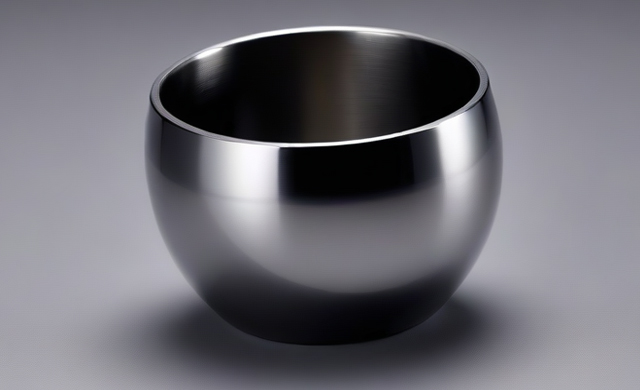
Advantages of Molybdenum Crucible
Molybdenum crucibles offer numerous advantages over other materials, making them a preferred choice for many applications. Here are some of the key advantages:
- High Temperature Resistance: Molybdenum crucibles can withstand extremely high temperatures, making them ideal for use in high-temperature applications such as metallurgy and glass manufacturing.
- Corrosion Resistance: The material has excellent resistance to corrosion, making it suitable for use in corrosive environments, including chemical processing and electroplating.
- Low Thermal Expansion: Molybdenum has a low coefficient of thermal expansion, which means it maintains its shape and size at high temperatures, making it ideal for use in high-temperature experiments.
- High Thermal Conductivity: Molybdenum has excellent thermal conductivity, allowing for efficient heat transfer throughout the crucible. This feature is particularly useful in heating processes.
- Durable: Molybdenum crucibles are highly durable, with excellent resistance to wear and tear. This robustness makes them ideal for use in harsh environments.
- Lightweight: Molybdenum is a lightweight material, which makes the crucibles easy to handle during manufacturing and transportation.
In summary, molybdenum crucibles offer exceptional properties and advantages that make them a popular choice in various industries. From their high-temperature resistance to their excellent thermal conductivity and durability, molybdenum crucibles prove to be a reliable and efficient choice for a wide range of applications.
Handling and Maintenance of Molybdenum Crucible
Proper handling and maintenance of molybdenum crucibles are critical for their longevity and optimal performance. The following tips can be useful in this regard:
Handling
When handling molybdenum crucibles, ensure that they are free from scratches, dents, or any visual damage. Avoid dropping, dragging, or hitting them against any hard surface, as this can cause microscopic cracks that can lead to premature failure. Always use gloves while handling them to prevent contamination from skin oil or sweat. Clean them with a soft cloth or brush to eliminate any dirt or debris that may have accumulated on the surface.
Maintenance
Regular maintenance of molybdenum crucibles can extend their lifespan and preserve their quality. Here are some maintenance guidelines:
- Before using the crucible, inspect it to ensure that the surface is clean and free from any debris or contamination.
- During use, avoid rapid temperature changes as it can cause thermal stress and lead to cracks or fractures. Heat them slowly and evenly to avoid thermal shock.
- After use, allow them to cool naturally before handling or cleaning. Do not immerse them in cold water or any other liquid as it can cause thermal stress.
- Regularly clean them with a soft brush or cloth to prevent any buildup of materials on the surface. Do not use abrasive cleaners or scrubbers that can scratch the surface.
- Store them in a dry, clean, and protected environment to avoid any exposure to moisture, dust, or other contaminants.
"Molybdenum crucibles have exceptional properties that make them suitable for a diverse range of applications. Proper handling and maintenance can ensure their longevity and optimal performance."
By following these handling and maintenance guidelines, you can ensure that your molybdenum crucibles continue to perform at their best. With their unique properties and advantages, they are an excellent choice for various industries and applications.
Challenges and Limitations of Molybdenum Crucible
Molybdenum crucibles are popular and versatile materials used in various industries and applications. However, like any other material, they have their challenges and limitations that one must consider. In this section, we will explore the potential drawbacks of molybdenum crucibles.
Challenges:
1. Expensive: Molybdenum is a relatively rare metal, which makes molybdenum crucibles more expensive than other types of crucibles.
2. Brittleness: Molybdenum has a low ductility, which means it is brittle and can fracture under stress. This can lead to cracks or chips on the crucible's surface, rendering it unusable.
3. Fragility: Molybdenum crucibles are highly sensitive to rapid temperature changes, which can cause them to crack and break, leading to loss of material and reduced yield.
Limitations:
1. Not Suitable for Some Applications: Molybdenum crucibles are not suitable for certain applications, particularly those involving highly acidic or alkaline environments, where they can react and corrode.
2. Not Compatible with Some Materials: Molybdenum crucibles are not compatible with some materials, particularly those that contain oxygen, which can react with molybdenum and cause contamination.
3. Low Capacity: Molybdenum crucibles have a smaller volume capacity compared to other types of crucibles, which limits their usage in large-scale applications.
Despite these challenges and limitations, molybdenum crucibles remain a preferred choice for various applications due to their exceptional properties and advantages. Understanding their weaknesses can help in making informed decisions in their usage and avoiding potential problems.
Innovations in Molybdenum Crucible Technology
The molybdenum crucible has come a long way since its inception. With the advent of new technologies, it has evolved into a highly efficient and reliable material. Here are some of the latest innovations in molybdenum crucible technology:
ArcMelting® Technology:
This innovative technique involves melting the molybdenum using an electric arc, resulting in a purer and more uniform structure. This process eliminates the need for chemical purification and ensures better performance and longevity of the crucible.
Precision Machining:
The ability to machine molybdenum with greater precision has led to the development of crucibles with intricate shapes and sizes. This allows for more efficient use of space in furnaces, resulting in higher yields and cost savings.
High Purity Molybdenum:
Advancements in refining techniques have enabled the production of molybdenum with higher purity levels. This translates to better resistance to oxidation and chemical corrosion, making it a preferred choice for high-temperature applications.
Customized Coatings:
New coatings have been developed to enhance the performance of molybdenum crucibles in specific applications. For example, a silicon carbide coating can improve the thermal shock resistance of the crucible, making it ideal for use in rapid thermal processing.
These innovations are just a few examples of the ongoing research and development in molybdenum crucible technology. As manufacturers continue to strive for improved performance and reliability, the future looks bright for this versatile material.
Environmental Impact of Molybdenum Crucible
Molybdenum crucibles have a relatively low environmental impact compared to other materials. The production of molybdenum crucibles requires less energy compared to ceramics or other metals, which reduces greenhouse gas emissions. Additionally, molybdenum is a naturally occurring element and is not harmful to the environment.
However, the primary environmental concern with molybdenum crucibles is their disposal. Like all metals, molybdenum is recyclable, but there is a lack of infrastructure currently in place to recycle them. Most molybdenum crucibles end up in landfills, where they can potentially leach chemical compounds into the ground.
It is important to note that molybdenum crucibles are not hazardous waste and can be disposed of in regular landfills. However, recycling is a more sustainable option and should be pursued whenever possible.
Overall, the environmental impact of molybdenum crucibles is relatively low, but efforts should be made to improve their disposal methods and increase recycling rates in the future.
Future Trends and Prospects for Molybdenum Crucible
Molybdenum crucibles have been continuously evolving to meet the demands of modern industries. As technology advances, the prospects for this versatile material are boundless. In this section, we will explore the future trends and potential avenues for molybdenum crucible.
3D Printing
With the advent of 3D printing technology, there has been a growing interest in using molybdenum for printing various products. Its excellent thermal conductivity and high melting point make it an ideal candidate for printing high-temperature products.
Nuclear Energy
Molybdenum is widely used in the nuclear industry due to its unique properties such as high thermal conductivity and low neutron absorption. With the increasing demand for recyclable and sustainable energy, molybdenum crucibles are expected to play a critical role in advanced nuclear reactors.
Additive Manufacturing
The rising popularity of additive manufacturing has led to a significant increase in the usage of molybdenum crucibles. Its high-temperature resistance and durability make it a preferred choice for additive manufacturing processes. This trend is expected to continue in the future.
Green Technology
In the wake of environmental degradation, there has been a growing interest in green technology. Molybdenum is a sustainable and environmentally friendly material that can replace harmful chemicals and materials used in various industries. Its potential applications in environmentally friendly manufacturing processes are vast.
The future of molybdenum crucibles is bright, and they are expected to play an instrumental role in cutting-edge industries. Advancements in manufacturing technology and material science will undoubtedly bring new opportunities and challenges for molybdenum crucibles.
Conclusion
In conclusion, molybdenum crucibles have proven to be a vital part of several industries due to their unique properties. These containers are highly durable, have an excellent thermal conductivity, and can withstand high temperatures and corrosion. The manufacturing process requires specialized techniques, but the end result is a reliable and long-lasting container.
While molybdenum crucibles offer several advantages over other materials, they do have certain limitations and challenges. Proper handling and maintenance are essential to ensure optimal performance and extended lifespan.
Future Trends and Prospects for Molybdenum Crucible
The future of molybdenum crucibles looks promising, with innovations in technology leading to enhanced performance and expanded potential applications. There is also a growing focus on sustainability, which could impact the way we utilize this material in the future.
Overall, molybdenum crucibles have become an indispensable component in several industries, and their importance is only set to increase in the coming years.
FAQ
What is a molybdenum crucible?
A molybdenum crucible is a specialized container made from molybdenum, a versatile material known for its high melting point and excellent thermal conductivity. It is used for various applications that require high temperature resistance and durability.
What are the properties of molybdenum crucible?
Molybdenum crucibles possess exceptional properties such as high melting point, excellent thermal conductivity, low thermal expansion, and resistance to corrosion and erosion. These properties make them suitable for applications in industries like semiconductor manufacturing and research laboratories.
How are molybdenum crucibles manufactured?
Molybdenum crucibles are manufactured through a multi-step process that involves powder metallurgy techniques. This includes compaction, sintering, and shaping the molybdenum powder into the desired crucible shape. Additional machining and finishing processes may also be employed to achieve the final product.
What are the applications of molybdenum crucible?
Molybdenum crucibles find applications in various industries such as semiconductor manufacturing, aerospace, medical, and research laboratories. They are used for processes like crystal growth, chemical analysis, thermal evaporation, and high-temperature sintering.
What are the advantages of using molybdenum crucible?
Molybdenum crucibles offer several advantages over other materials. They exhibit high temperature resistance, corrosion resistance, and excellent thermal conductivity. They also have good dimensional stability under high temperatures, making them suitable for demanding applications.
How should molybdenum crucibles be handled and maintained?
Proper handling and maintenance of molybdenum crucibles are important to ensure their longevity and optimal performance. It is recommended to avoid rough handling, minimize exposure to contaminants, and clean them using appropriate methods. Avoid thermal shock and follow safety guidelines during usage.
What are the challenges and limitations of molybdenum crucible?
Molybdenum crucibles may have some limitations, including the potential for oxidation at high temperatures and the risk of contamination if not handled properly. They are also relatively expensive compared to other materials. However, with proper care and understanding of their limitations, these challenges can be managed effectively.
Are there any recent innovations in molybdenum crucible technology?
Yes, there are ongoing innovations in molybdenum crucible technology aimed at enhancing their performance and expanding their applications. These innovations include improvements in material purity, manufacturing processes, and surface treatments to address specific requirements in different industries.
What is the environmental impact of molybdenum crucible?
The environmental impact of molybdenum crucibles is relatively low compared to some other materials. Molybdenum is a naturally occurring element, and its use in crucibles does not pose significant environmental risks. However, proper disposal and recycling methods should be followed to minimize any potential impact.
What are the future trends and prospects for molybdenum crucible?
The future of molybdenum crucibles looks promising, with increasing demand in industries such as electronics, energy, and aerospace. Continuous research and development efforts are expected to further improve their performance, expand their applications, and drive their adoption in new technologies.
Contact Us

Name: Mr. Ren
Tel: +86-18292471213
E-mail: info(at)intemetal.com
Add: Middle Section Baotai Road, Weibin District, 721013, Baoji, Shaanxi Province, China




